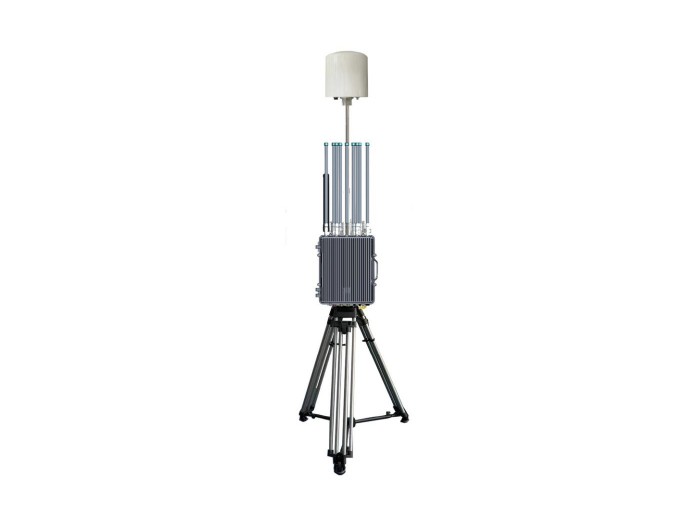Anti UAV Defense System 5G: Enhancing Aerial Security in the Connected Era
As the use of unmanned aerial vehicles (UAVs), commonly known as drones, continues to soar, protecting critical infrastructure, crowded venues, and sensitive sites from unauthorized drone activity has become a pressing challenge. The integration of 5G technology into anti UAV defense systems is revolutionizing how organizations detect, track, and neutralize drone threats effectively. Leveraging 5G’s ultra-low latency, massive connectivity, and enhanced data throughput, modern anti UAV defenses deliver faster threat response and improved situational awareness. This article explores the growing demand for anti UAV defense system 5G solutions, highlighting industry trends, distinct advantages, and practical applications. Whether you’re responsible for airport security, event management, or national defense, understanding how 5G empowers anti UAV capabilities is essential in today’s evolving aerial threat landscape.
1. What is an Anti UAV Defense System Powered by 5G?
An anti UAV defense system 5G is a specialized solution designed to detect, identify, track, and mitigate unauthorized or hostile drones using advanced connectivity provided by 5G networks. Traditional drone detection systems have relied on radar, RF scanners, and optical sensors but often face challenges with latency and real-time coordination across platforms. With 5G, these systems gain significant improvements:
- Ultra-low latency: Enables near-instantaneous communication between sensors and control centers for rapid threat analysis.
- High data throughput: Facilitates real-time streaming of high-definition video and telemetry data.
- Massive device connectivity: Supports numerous sensor nodes covering wide geographical areas simultaneously.
According to a recent report by MarketsandMarkets, the UAV defense market is expected to grow at a CAGR of 11.2% through 2027, with 5G integration accelerating innovation and adoption. For example, airports use 5G-enhanced radar and signal jamming paired with AI algorithms to classify drones quickly, ensuring passenger safety.
2. Benefits of Integrating 5G into Anti UAV Defense Systems
Incorporating 5G technology into anti UAV defense systems brings several critical advantages that address current security challenges:
Enhanced Real-Time Detection and Response
Traditional drone detection systems sometimes suffer from delayed reaction times, jeopardizing security. The low latency of 5G networks—often less than 10 milliseconds—allows sensors and command units to exchange data instantly. This rapid communication enables defensive measures such as signal jamming or drone capture systems to activate precisely when needed, minimizing false alarms and enhancing operational effectiveness.
Improved Coverage with Networked Sensors
5G’s support for massive IoT connectivity means multiple detection nodes can form a coordinated network spanning airports, stadiums, or military bases. This interconnected system triangulates drone positions more accurately and continues to monitor even if one sensor fails, ensuring robust aerial surveillance.
Data-Driven Threat Analysis
With 5G bandwidth, anti UAV solutions can utilize AI-powered analytics using live video feeds and drone telemetry data. This capability allows for pattern recognition—distinguishing between hobbyist and malicious UAV flights—enabling customized defense responses. For instance, law enforcement can prioritize neutralizing drones suspected of smuggling contraband or spying.
One pilot project integrating 5G with anti UAV solutions in a major European airport demonstrated a 30% faster detection to interception time, highlighting the tangible security improvements 5G brings.
3. Real-World Applications of Anti UAV Defense System 5G
Anti UAV defense system 5G technologies are increasingly deployed across multiple sectors where drone threats are prominent:

Airport and Airspace Security
Airports remain vulnerable to unauthorized drone incursions that can disrupt flights and endanger public safety. By using 5G-enabled detection and neutralization systems, airport security can rapidly identify and mitigate drone threats before they interfere with aircraft operations. Collaborative 5G networks also enable seamless integration with air traffic control systems for comprehensive airspace management.
Critical Infrastructure Protection
Facilities like power plants, military bases, and government buildings adopt anti UAV defense systems that leverage 5G to maintain continuous surveillance and dynamic threat responses. With 5G, the defense perimeter can extend over large areas with real-time data sharing among security teams and drones producing reconnaissance footage to assist in security planning.
Public Event Safety
Stadiums, concerts, and political events deploy 5G-enabled anti drone defenses to prevent drone-based spying or attacks. Real-time alerts combined with automated counter-drone responses provide enhanced protection without disrupting event flow, ensuring attendee safety and peace of mind.
Border Security and Law Enforcement
Customs and border patrol units use 5G anti UAV systems to detect smuggling drones, quickly coordinate interception efforts, and collect forensic data through live video streams. These capabilities help combat illicit activities effectively over vast and challenging terrain.
Key Recommendations to Choose and Implement Anti UAV Defense Systems with 5G
- Assess Your Operational Environment: Identify specific threat levels, coverage area, and existing infrastructure to choose a compatible 5G-enabled system.
- Prioritize Systems with AI and Multi-Sensor Fusion: Opt for solutions combining radar, RF, optical, and acoustic sensors enhanced by AI analytics for accuracy.
- Ensure Regulatory Compliance: Work with vendors providing systems that adhere to local laws on frequency use and drone mitigation methods.
- Plan for Scalability and Integration: Select modular systems capable of expanding coverage and integrating with other security platforms.
- Engage Expert Consultation: Contact professional providers for customized assessments and demo installations to determine best-fit solutions.
Want to learn more? Visit our website or contact us for expert advice tailored to your security needs.
Conclusion
As drone technology advances, so do the risks posed by unauthorized UAVs in sensitive airspaces. Anti UAV defense system 5G solutions offer groundbreaking improvements in threat detection, rapid response, and integrated defense coverage. By harnessing the power of 5G networks, organizations can protect their assets with heightened efficiency and reliability. Exploring these next-generation anti drone systems is critical for aviation authorities, infrastructure managers, and security professionals dedicated to staying ahead of emerging aerial threats. Contact us today for a consultation or visit our website to discover how our 5G-enabled defense systems can safeguard your environment effectively.
















